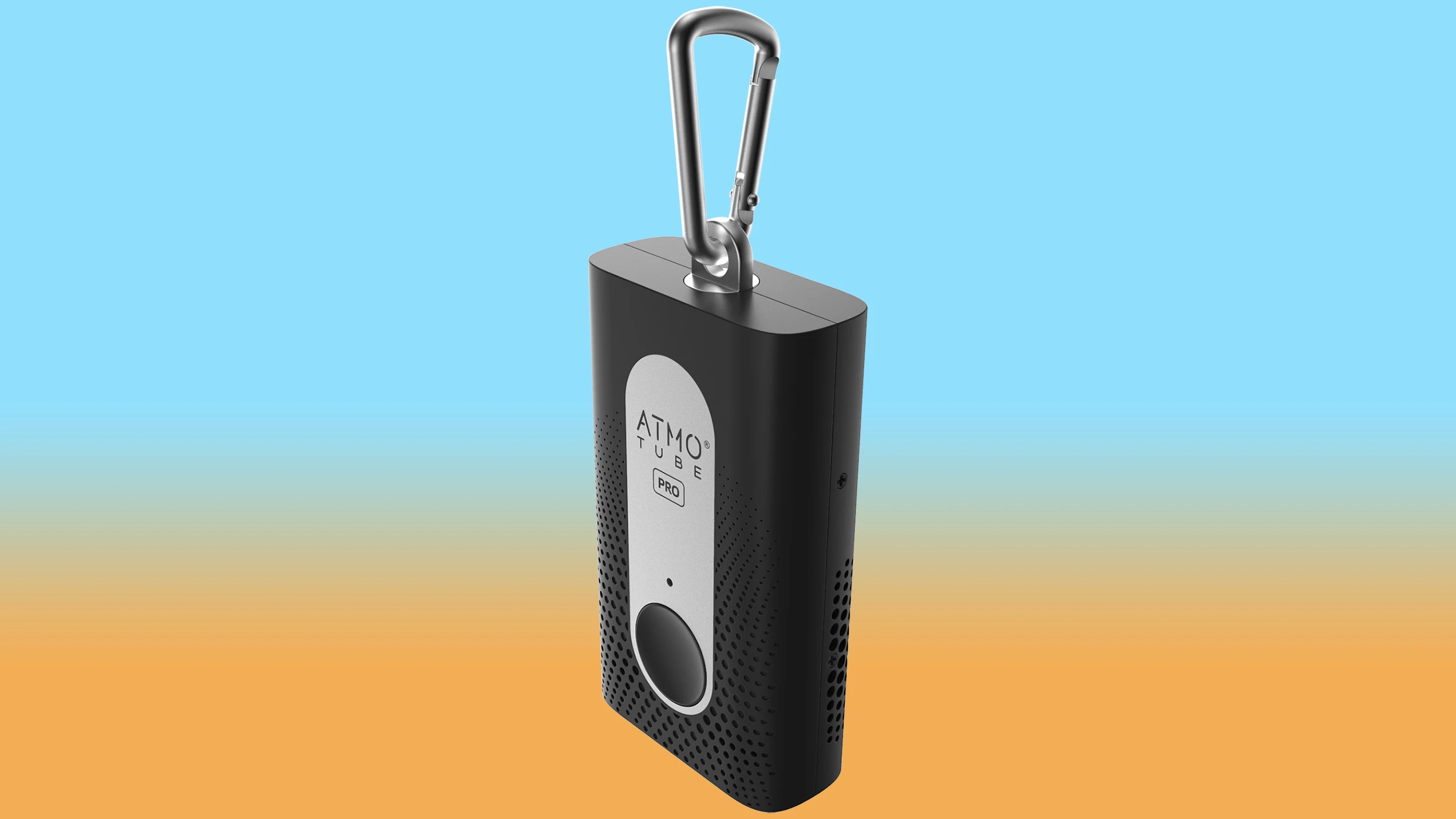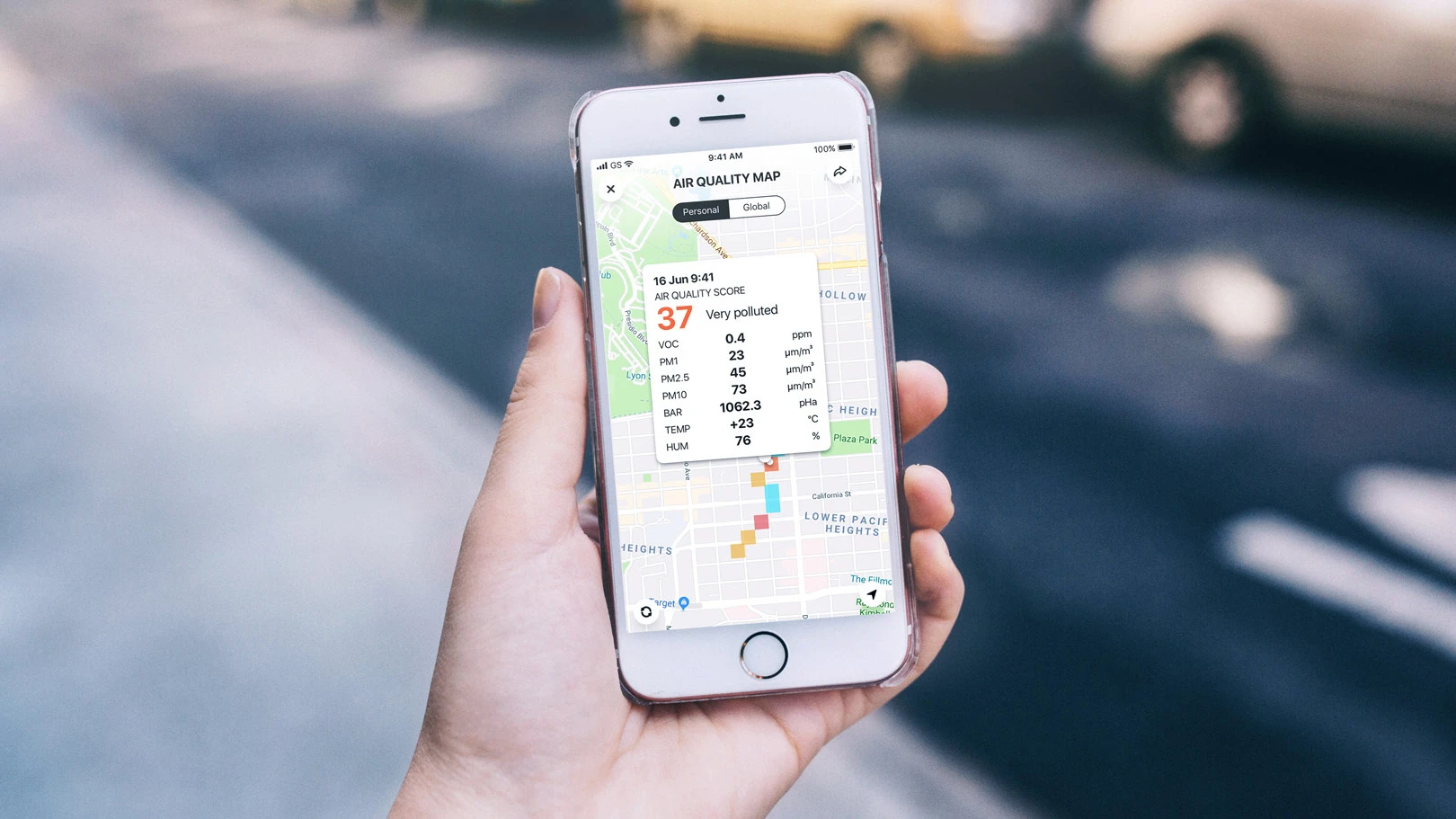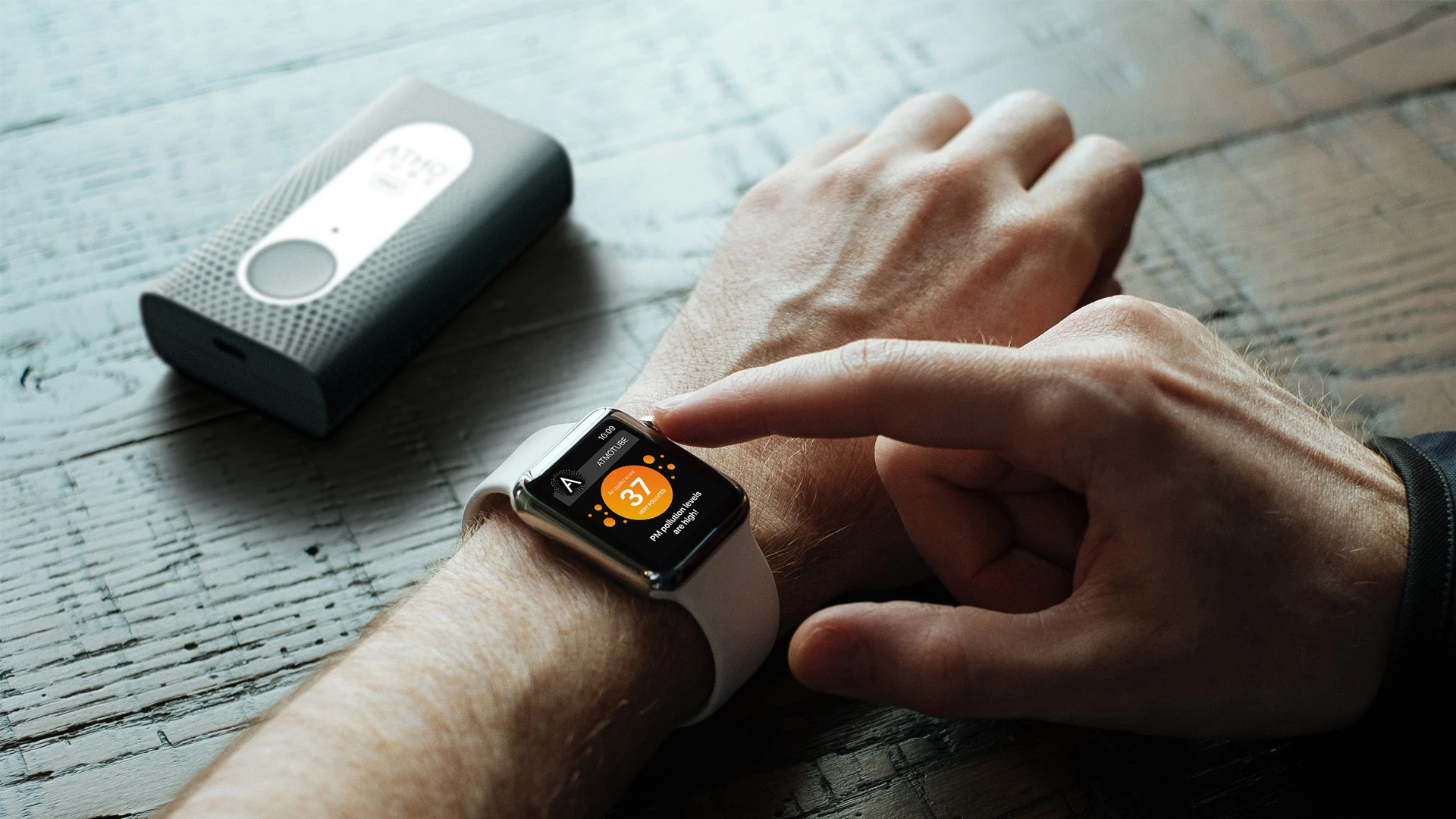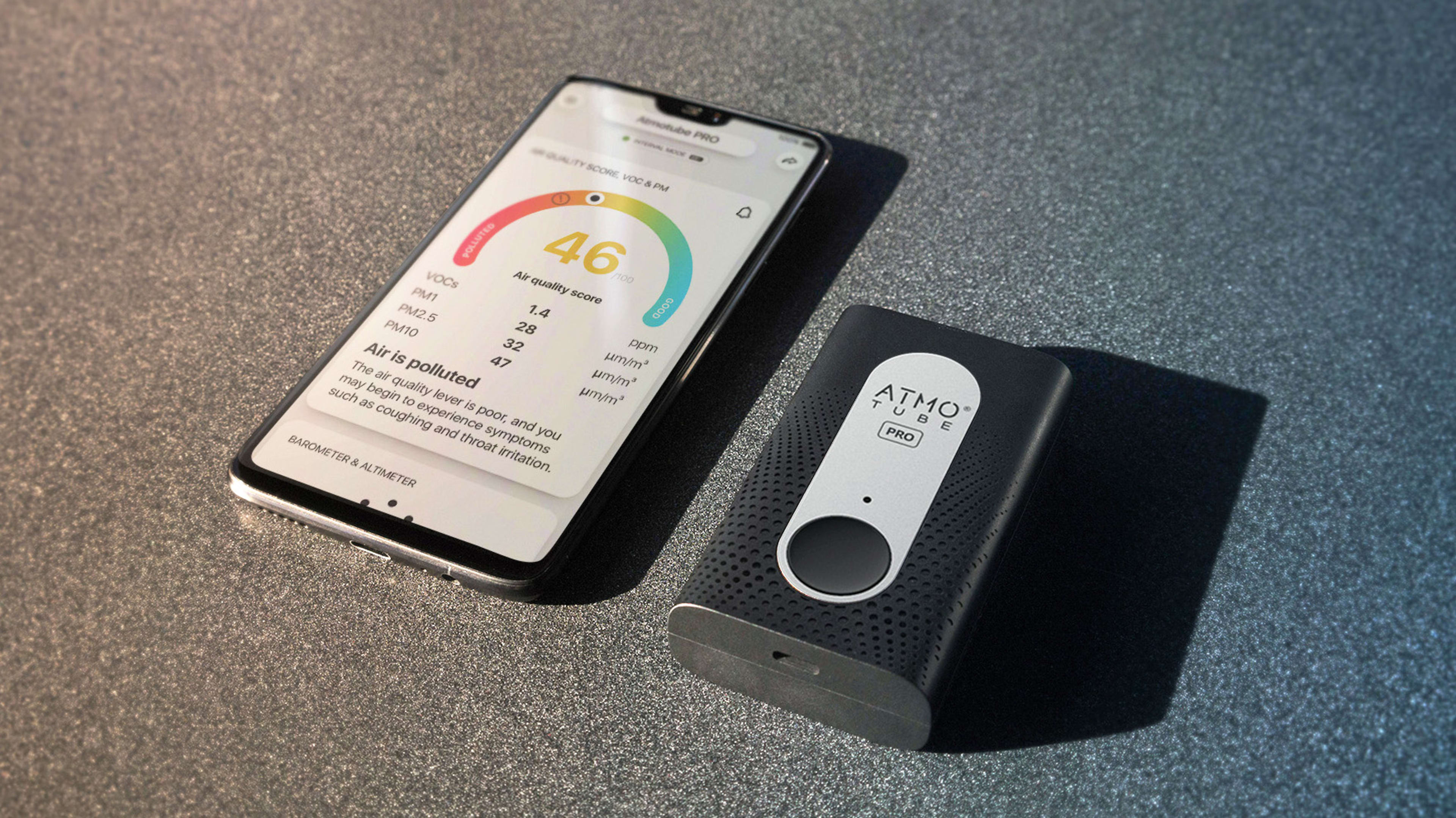A few years ago, when product designers from a San Francisco-based design studio traveled to China to visit factories for client projects, they couldn’t stop thinking about the smog. “We began to wonder how we can understand if the air around us was safe and how we could measure it,” says Vera Kozyr, one of the founders of the studio, called NotAnotherOne. Cities typically measure air pollution only in a few locations and report averages, though pollution varies block by block. (In China, the government also reports the data in misleading ways.) When the designers couldn’t find a device to give more personalized and accurate air quality data, they created one.

For the last few days, I’ve tried using the latest version of their device, called the Atmotube Pro. A little smaller than a deck of cards, it’s designed to clip on the side of a backpack or bag, so you can track changing pollution levels as you walk down the street. A tiny fan inside the gadget pulls in air and pushes it through chambers with sensors that measure pollutants like particulate matter, microscopic particles of soot, and other pollution that can worsen asthma and cause other health problems. The sensors measure three sizes of particulate matter—PM 1, PM 2.5, and PM 10. The smaller the particle, the more likely it will enter the bloodstream. The device also measures volatile organic compounds, gases that are also linked to disease. On a connected app, it tracks pollution levels in real time—with alerts if pollution gets particularly bad—along with temperature, humidity, atmospheric pressure, and altitude.


Street by street, the app showed slight changes in pollution, as the levels ticked higher with more traffic. The device can be a tool to better understand the impact of your daily commute. “One option is just changing your route, if you’re walking or if you’re using a bicycle,” says Kozyr. Drivers using the device might notice how much pollution they’re breathing as they sit in traffic and decide to close their windows. I watched levels climb as I waited at an intersection next to an idling truck, or when I passed a construction site. The biggest revelation was the level of pollution in my apartment when I returned from a weekend away. It also spiked higher as I turned on a gas stove to start cooking dinner. “Air quality stations in the city don’t take into account indoor air pollution at all,” Kozyr says, adding that levels of VOCs can be five times higher inside than outside. She says that some customers stop using typical cleaning products after they watch VOC levels rise, and many customers end up getting air purifiers. At a bigger scale, the outdoor data can give a more detailed picture of pollution in cities. The app crowdsources data from each device to map pollution around the world.
Recognize your brand’s excellence by applying to this year’s Brands That Matter Awards before the early-rate deadline, May 3.
